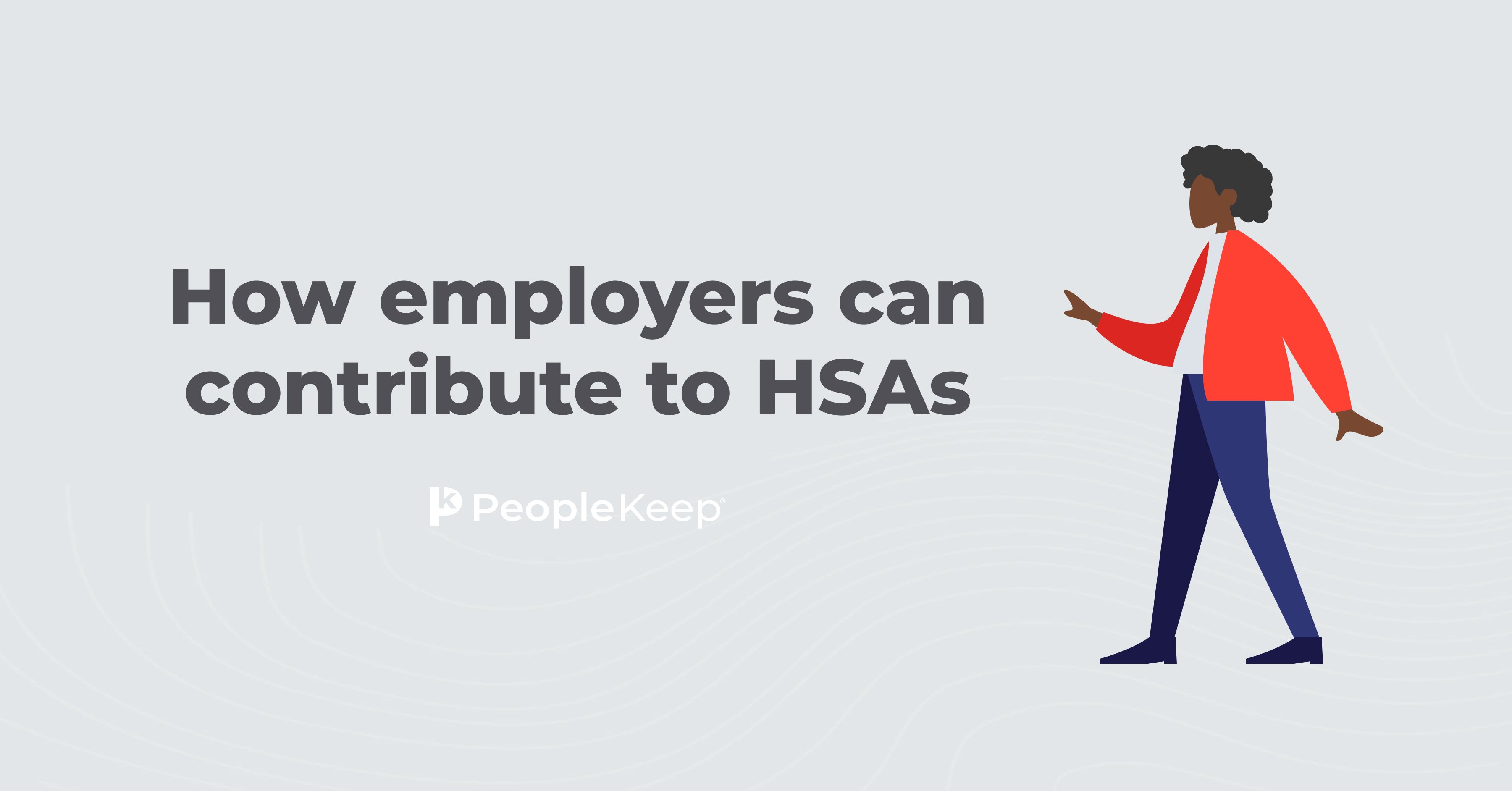How HSA contribution limits work for spouses
By Elizabeth Walker on January 2, 2024 at 4:04 PM
Health savings accounts (HSAs) are increasingly popular, having grown to 35.5 million accounts holding roughly $104 billion in assets in 2022, according to Devenir research1.
Because of their popularity, it’s not uncommon for two spouses to each have their own HSA. Though this scenario brings with it specific rules, it's possible for a married couple to have two HSAs—one for each spouse—under certain conditions.
In this article, we’ll go over the rules regarding HSA contributions, specifically focusing on rules in a scenario where two spouses each have an HSA. We'll also cover the advantages of having two separate HSAs and how HSAs work alongside health reimbursement arrangements (HRAs).
What is a health savings account?
First, let’s go over what an HSA is. HSAs are savings accounts where you and your employer can contribute pre-tax money to pay for medical services and other qualifying out-of-pocket medical costs, like prescription drugs and over-the-counter medications.
An eligible individual can open an account or an employer can offer one. In either situation, an HSA requires an HSA-qualified high-deductible health plan (HDHP). Both you and your employer can contribute to the HSA, and the funds stay in the account indefinitely. However, you will always own it.
HSAs come with many tax benefits. You’ll receive a 100% federal income tax deduction on annual contributions. The funds you withdraw to pay for qualified out-of-pocket expenses are also tax-free. Funds also roll over yearly, growing in your account like a tax-free investment.
However, if an employee withdraws funds for non-medical expenses before they turn 65, the federal government will consider it taxable income on their annual tax return. Plus, they must pay a 20% tax penalty.
Lastly, most HSAs issue a credit or debit card, so you can quickly pay for qualified healthcare expenses via card without dealing with a health insurer or a complicated financial institution.
What are the regulations for HSA contributions?
If you and your spouse each have HSA-qualified health coverage, and you both plan on contributing to your HSAs, you must have separate accounts. This is true even if you’re both covered by the same high-deductible health plan. Additionally, whether you have a single or family plan affects the limits for HSAs.
For 2025, the self-only maximum contribution limit was $4,300, and the family contribution limit was $8,550. For 2026, the limits increase to $4,400 and $8,750, respectively.
Maximum contribution limits are based on the calendar year, meaning allowable contributions are prorated by the number of months an individual is eligible to contribute to an HSA. For example, if an individual makes HSA contributions starting March 1, 2026, their total annual contribution toward their HSA can’t exceed $3,370 that year ($4,400 ÷ 12 x 10).
You can make additional contributions at any point during the tax year through the federal income tax return due date, which is typically April 15.
The IRS treats married couples as a single tax unit, which means you must share one family HSA contribution limit of $8,750 if you are on the same health policy. If you and your spouse each have your own self-only coverage, you may each contribute up to $4,400 annually into your separate accounts.
Depending on your family’s needs, you can decide if a family coverage plan or self-only coverage is best for your financial situation.
The IRS gives married couples three options for managing their HSA accounts, regardless of whether they have self-only coverage or a family health insurance plan:
- Split the family medical plan contribution evenly between the spouses.
- Allocate it unevenly, according to a specific division both parties have agreed on.
- Put 100% in one spouse’s account.
If you’re maintaining two HSAs with one spouse having a family plan and the other spouse with a self-only coverage plan, you can’t combine the annual contribution limits for a total of $13,150.
What are the advantages of having two separate HSAs?
While it may seem cumbersome to track contributions for two separate HSAs, it can be beneficial for maximizing your savings and covering more out-of-pocket medical expenses.
You and your spouse should especially consider two HSA accounts if one or both of you is at least 55 years old, or will be by the end of the year. This will make you eligible to contribute an additional $1,000 in catch-up contributions to your HSAs. But remember, you can't surpass the annual limit, or you will be penalized.
If both of you have employers who provide HSA contributions, two HSAs will increase your overall savings. If both employers are contributing to your individual HSAs, you’ll receive more money combined than if just one of you had an HSA from your employer.
Also, once you’re 65, your HSA can be used to pay for non-qualified expenses without a penalty, making your HSA an important addition to your long-term retirement strategy.
What are excess HSA contributions and penalties?
If an individual or married couple has excess contributions, they’ll be subject to a 6% excise penalty tax2. While excess contributions aren’t tax deductible, you can avoid the fee if you withdraw the excess contribution amount from the HSA before the tax deadline for that year.
Excess contributions could be used to pay for out-of-pocket expenses, such as prescription eyeglasses, a year’s worth of contacts, or dental expenses, before the year is up. If you’ve gone over the HSA contribution limit and can’t use it for medical services, talk to your personal tax advisor for other options.
How can HRAs work alongside HSAs?
In some cases, couples may find themselves in a scenario in which one spouse has an HSA and the other has an HRA, or health reimbursement arrangement (HRA). If that’s your case, there are ways you can leverage both.
For you or your spouse to use an HRA and HSA together, you’ll need to coordinate the two benefits compliantly. Luckily, this is possible with two popular HRA options—the qualified small employer HRA (QSEHRA) and the individual coverage HRA (ICHRA).
Let’s take a look at these two options below that your family can use to maximize your savings.
HSAs and the QSEHRA
If your employer offers a QSEHRA and you have an HSA, you’re in luck. Using an HSA and a QSEHRA together is a great way to maximize your tax-free compensation.
For a QSEHRA and an HSA to work together, the QSEHRA must be set up to reimburse individual plan monthly premiums only. You can use your employer's monthly allowance to purchase your own HDHP and use the money from your HSA to pay for medical expenses that your HDHP doesn’t cover.
Using both health benefits to cover your individual plan premiums and qualified medical expenses creates a more comprehensive and flexible health benefit option for you and your family.
HSAs and the ICHRA
Similar to the QSEHRA, your employer must set up their ICHRA to reimburse your monthly premiums only for you to be eligible to make contributions to your HSA. However, unlike the QSEHRA, you can opt out of the ICHRA benefit altogether and choose only to use your HSA.
Additionally, because HSA funds don’t expire, you can choose not to utilize your HSA during the years you have an ICHRA if you decide to opt-in to the benefit. That way, you can reap the benefits of growing your HSA funds and using them in the future.
Conclusion
HSAs have become increasingly popular in recent years for helping individuals and families with a high-deductible plan pay for out-of-pocket costs on a pre-tax basis with personalized control. While there’s no such thing as a “joint” HSA, married couples can take advantage of the tax benefits HSAs offer by maintaining individual accounts.
By combining an HRA with their HSA, spouses can increase their savings and set themselves up for financial success. If you’d like to learn more about HRAs and how they can work alongside your HSA, PeopleKeep can help. Contact us, and we’ll be happy to get you started.
This article was originally published on September 1, 2020. It was last updated on January 2, 2024.
Check out more resources
See these related articles

How employers can contribute to HSAs
This blog will define HSAs, discuss how employers can contribute to an HSA, and provide other health benefit options.

Health savings account (HSA) FAQs
Learn what happens to your HSA when you leave a job and more. Get answers to common HSA FAQs like how to manage your funds after employment ends.

Using HSA funds for dependents’ medical expenses
Learn how to use HSA funds for dependents' medical expenses. Understand eligibility rules and which costs qualify under a dependent HSA.



